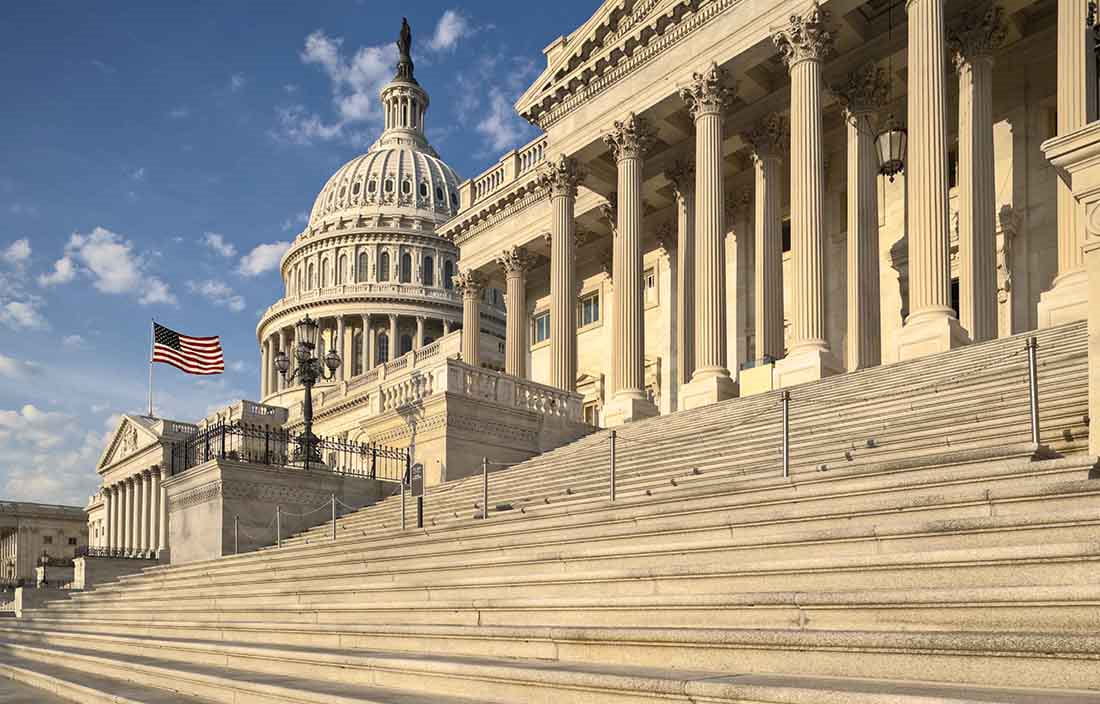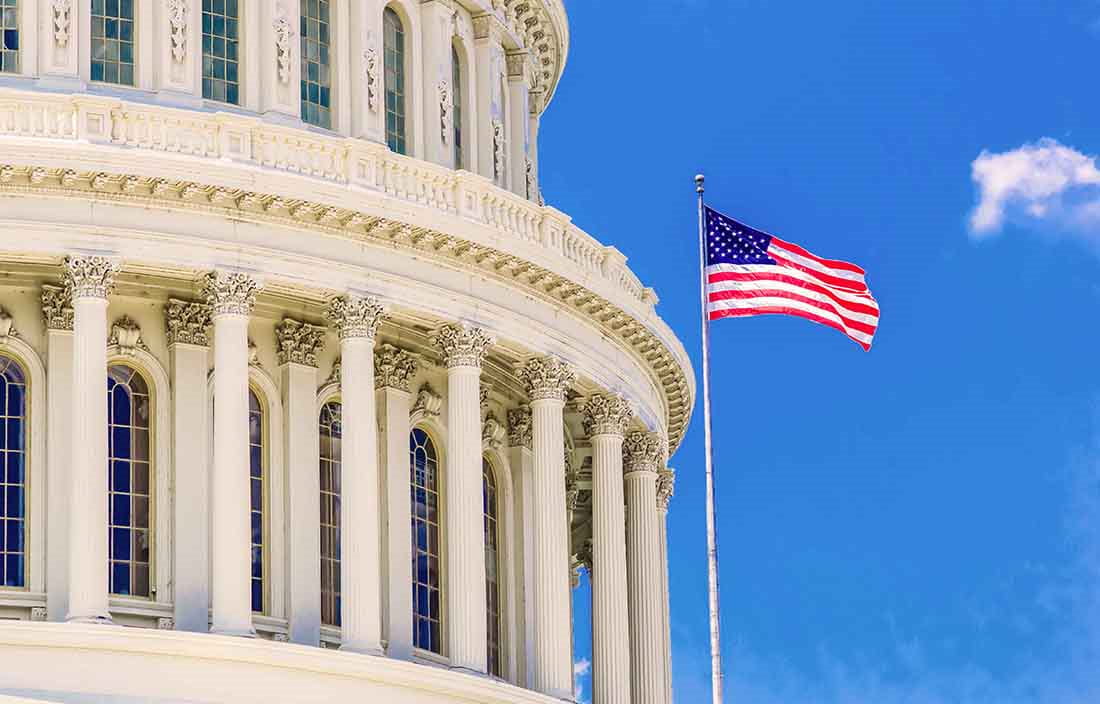The American Rescue Plan Act (ARPA), unlike the previous economic stimulus bill, provides federal funding to states and local governments of all sizes. As with most federal funding, there are restrictions on how the money must be spent. There are also significant questions about how much governments will ultimately receive and how they’ll spend those dollars.
The largest of all funding streams, the Coronavirus State and Local Fiscal Recovery Funds, represents a $350 billion top-line allocation, of which 57% has been allocated to states and 35% to local governments. The distribution formula for this funding is different from the formula used to distribute the Coronavirus Relief Fund previously provided under the CARES Act. While the state and local allocation estimates have been published and can provide governments with a good estimate of the amounts they might anticipate receiving, they’re still subject to some change.
How can these ARPA funds be used?
The state and local fiscal recovery funds, under Subtitle M, Sec. 9901, Coronavirus State and Local Fiscal Recovery Funds, specifically subsections 602 and 603, is available for four main purposes and must be used by Dec. 31, 2024:
- To respond to the public health emergency with respect to COVID-19 or its negative economic impacts, including assistance to households, small businesses, and nonprofits, or aid to impacted industries such as tourism, travel, and hospitality.
- To respond to workers performing essential work during the COVID-19 public health emergency by providing premium pay to eligible workers that are performing such essential work, or by providing grants to eligible employers that have eligible workers who perform essential work.
- For the provision of government services to the extent of the reduction in revenue due to the COVID-19 public health emergency relative to revenues collected in the most recent full fiscal year of the entity prior to the emergency.
- To make necessary investments in water, sewer, or broadband infrastructure.
A state or government may also transfer funds to a private nonprofit organization, a tribal organization, a public benefit corporation involved in the transportation of passengers or cargo, or a special-purpose unit of state or local government. A local government can also transfer funds to their state government.
However, the funding does come with restrictions including the inability to use the funds to make pension deposits.
How will ARPA funds be distributed?
States and entitlement metropolitan cities and counties will receive funding directly from the U.S. Treasury. Funds will be distributed by the U.S. Department of the Treasury in two equal tranches. Within 60 days after enactment, the U.S. Treasury is required to release the first tranche allocated to a city, county, or state. The second tranche can’t be released earlier than 12 months after the first payment. For nonentitlement units of local government, the payments will flow through the state not later than 30 days after the state receives the distribution from the Treasury, although the state can request up to two additional extensions.
Any government receiving these funds is required to provide periodic reports to the Secretary of the Treasury providing a detailed accounting of the uses and, in the case of a state or territory, all modifications to tax revenue sources during the period.
A recoupment provision also exists. If a state, county, or municipality doesn’t comply with any provision of this bill, they will be required to repay the U.S. Treasury an equal amount to the funds used in violation of the provisions.
Other ARPA funding streams and programs
These State and Local Fiscal Recovery Funds are only one of many funding streams that governmental entities will benefit from as part of the passage of the ARPA. Other programs include FEMA disaster relief, housing, rental assistance, transportation and infrastructure dollars, among others.
ARPA also provides some additional relief to governments in the form of emergency paid sick leave credits for leave provided April 1, 2021 through Sept. 30, 2021, which are available to tax-exempt 501 (c)(1) organizations.
Questions governments should consider
As a result of all these additional funding mechanisms, many governments will see significantly more federal dollars than they may have received previously; given this, governments will likely have many questions. Aside from the most obvious issue about how they will spend the awarded dollars, some of these questions include:
- What kind of guidance about allowable costs, reporting, and other requirements might be issued by federal awarding agencies and when?
- What types of tracking mechanisms do I need to put in place to support allowable costs?
- Do I need to make changes to my government’s internal controls?
- What other policies or procedures do I need to have in place, particularly if I’m a government that hasn’t received much (if any) federal funding in the past?
- What is the timing of the revenue recognition of these federal dollars for GAAP purposes?
- Which funds might be subject to a single audit?
- For the funds subject to a single audit:
- What do I need to know about 2 CFR 200?
- What federal assistance listing (previously known as the CFDA number) do these dollars fall under? These determinations could impact which programs will be tested during your single audit. For example, are the dollars received under the State and Local Fiscal Recovery Fund the same as the assistance listing for the Coronavirus Relief Fund (21.019)?
- When do I report these funds on the Schedule of Expenditures of Federal Awards?
Addressing these questions is going to take some time, and some answers may be clearer than others. In addition, addressing some of these questions is going to depend on the issuance of subsequent guidance from federal funding agencies and may not come as quickly as we’d all like.
Planning for ARPA funding
The good news is that there are certain things to address now. While the first priority will be determining how these funds will be spent, at the forefront of your planning process should be an evaluation of your government’s internal capacity to administer these federal funds. It will be equally important to ensure you understand, evaluate, and track the various requirements associated with these programs, particularly as additional guidance is issued. Your organization may also need to put in place new procedures and controls over the appropriate spending and documentation of these dollars and will want to consider transparency initiatives. You may also want to reread our article, “Top three things to consider if you’ve received COVID-19 funding,” which speaks to several considerations that likely should be top of mind. This includes internal controls, single audit triggers, and considerations and compliance with best practices.
As you navigate through these new funding streams and want to talk through the above questions (and more!), don’t hesitate to call us! We’re here to help.





